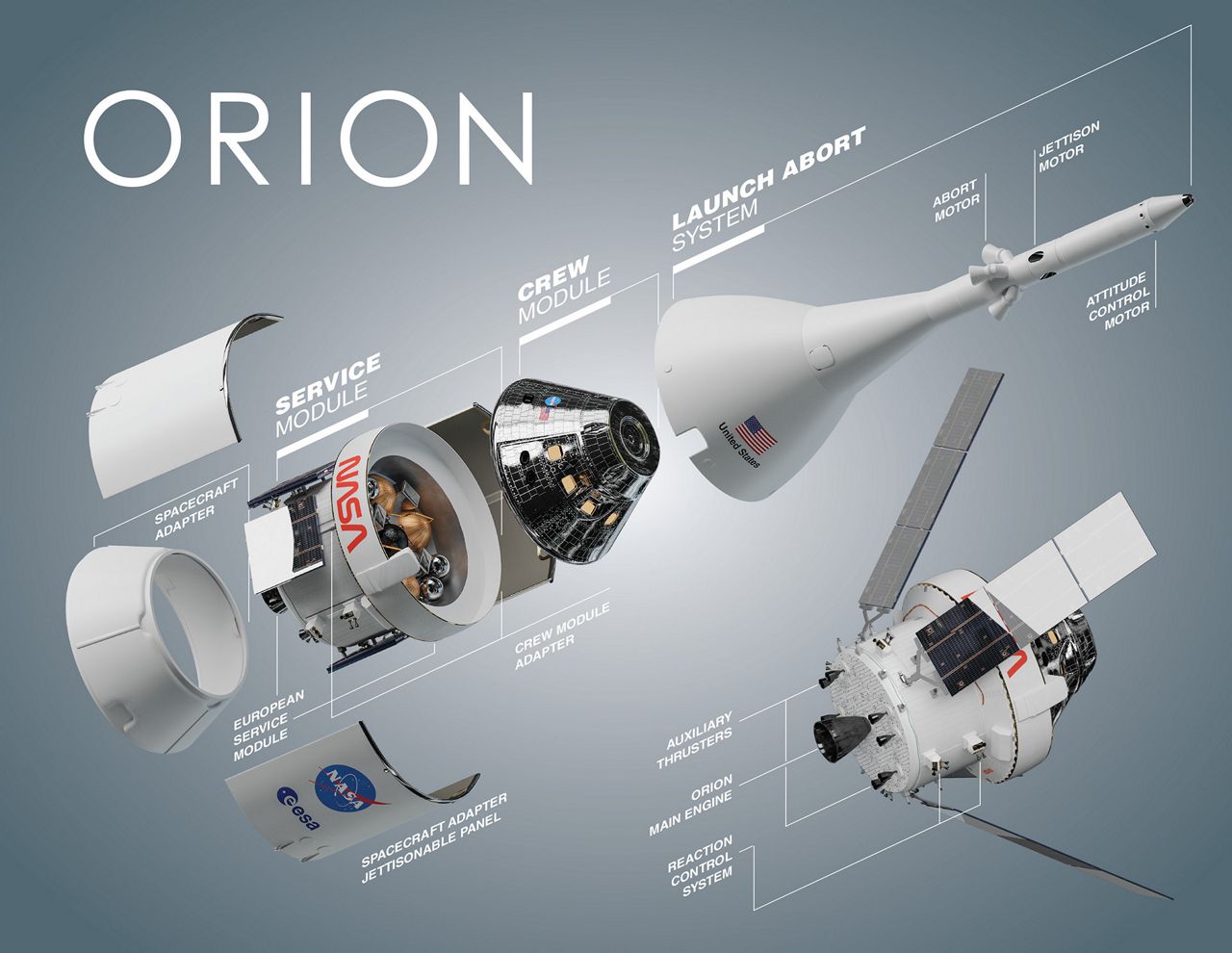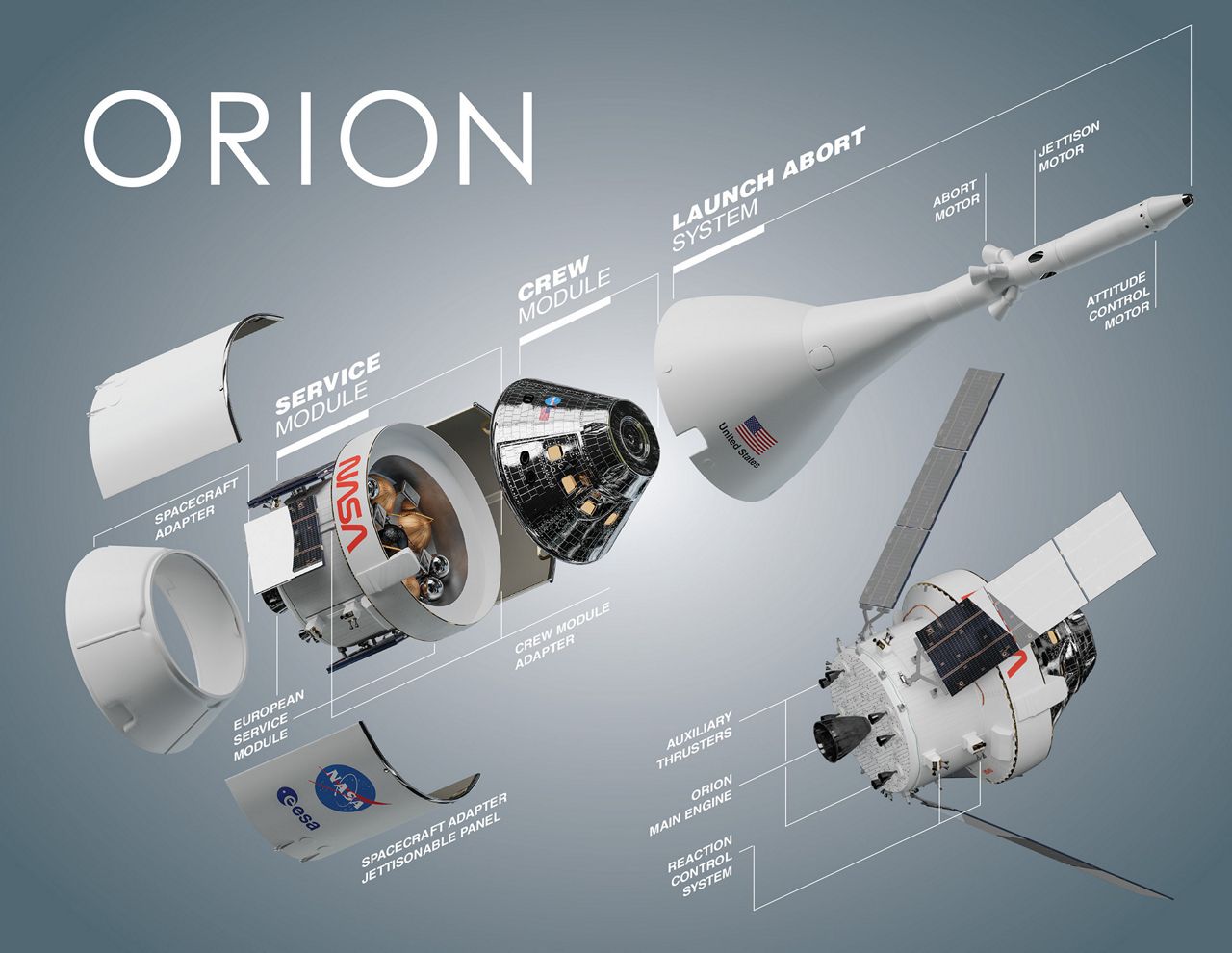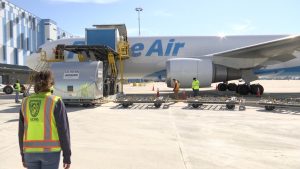After a 25-day mission to the moon and back, the Orion spacecraft will return to Earth in a splashdown on Sunday.
What You Need To Know
- Orion is expected to splash down at around 12:39 p.m. EST., on Sunday, Dec. 11
- There are a few steps that the Orion spacecraft needs to take before its splashdown
- RELATED coverage:
- 🔻Scroll down to watch the splashdown🔻
From lifting off at Launch Pad 39B at the Kennedy Space Center on Nov. 16, Orion is scheduled to splash down off the coast of Baja California on Sunday.
During a mission briefing on Thursday, Judd Frieling, an ascent and entry flight director for Artemis 1 mission, explained that Orion was originally going to land off the coast of San Diego, but due to weather constraints, the new splashdown location has been moved 300 nautical miles south, off Guadeloupe Island, which is off Mexico’s Baja California.
Orion is expected to splash down at around 12:39 p.m. EST.
Orion Splashdown Countdown
Mission Specs:
- Space Launch System rocket: 322 feet tall
- Orion: 10 feet, 11 inches tall and 16.5 feet in diameter
- Mission Duration: 25 days, 11 hours, 36 minutes
- Total mission distance: About 1.3 million miles
- Orion’s speed once it returns to Earth: 25,000 mph
- Temps on Orion’s heat shield: 5,000 degrees Fahrenheit
Coming in for a landing
Despite the Artemis I mission having issues getting off the ground (from liquid hydrogen leaks to hurricanes), the Nov. 16, 2022 launch is a date that will go down in history as humans’ first step to returning to the moon in nearly 50 years.
From going to the moon and orbiting it (and seeing the dark side of Earth’s natural satellite), Orion’s mission has gone well, so far.
But now it is time to return home and there are still a couple of steps before Orion can even land in the cooling waters of the Pacific Ocean.
Just before Orion re-enters Earth’s atmosphere, it will break apart. But it is planned. Orion is made up of three sections: The launch abort system, the crew module and the service module.

This is a breakdown of the three sections of the Orion spacecraft. (NASA)
The launch abort system (the part that looks like a nose cone) is released right after launch when the craft enters space.
But as the Orion nears Earth, the service module (which is home to Orion’s main engine and eight auxiliary thrusters and decked out in solar panels) will detach itself from the crew module.
And once Orion hits Earth’s atmosphere, it will be a hot time. But more on that later.
But thankfully, Orion will not be making such a big splash thanks to 11 parachutes that are comprised of 36,000 square feet of canopy material. And the canopy is attached to the top of Orion by “more than 13 miles of Kevlar lines that are deployed in series using cannon-like mortars and pyrotechnic thrusters and bolt cutters,” NASA described.
In fact, the space agency goes into detail about how the parachutes are used.
“Parachute deployment begins at an altitude of about five miles with three small parachutes pulling the forward bay covers away. Once the forward bay cover separates, two drogue parachutes will slow and stabilize the crew module for main parachute deployment. At an altitude of 9,500 feet and a spacecraft speed of 130 mph, three pilot parachutes will lift and deploy the main parachutes. Those 116-foot-diameter parachutes of nylon broadcloth, or ‘silk,’ will slow the Orion crew module to a splashdown speed of 20 mph or less.”
Once Orion is safely back on Earth and floating in the Pacific Ocean, the transport dock ship U.S.S. Portland will retrieve the craft and bring it back to the Naval Base San Diego.
In fact, during a teleconference with the Asia Pacific Media Hub (part of the U.S. Department of State’s Bureau of Global Public Affairs) on Thursday, U.S. Army General James H. Dickinson, commander of the U.S. Space Command, mentioned how he will be witnessing the splashdown.
“And after I depart here in Hawaii, I’m excited to travel to San Diego during a couple of days to observe the splashdown and recovery of the Artemis I capsule. The Department of Defense has a long history of partnering with NASA and supporting spaceflight programs spanning more than 60 years,” he said, adding that the U.S. Space Command supports NASA in various ways, such as search and rescue of astronauts and the recovery of manned spaceflight assets. “We also support NASA by providing space domain awareness of manmade and natural objects in space for the safety of the International Space Station …”

“NASA’s Landing and Recovery Team practices bringing a mock Orion capsule into the well deck of the USS Portland (LPD 27) ahead of the Artemis I Orion splashdown slated for Dec. 11,” the space agency stated. (NASA)
Why the splashdown is important
The splashdown is important and it is not just because NASA wants its spacecraft back.
The uncrewed Artemis I mission has many objectives: Having the Space Launch System rocket send the Orion spacecraft up into space and having Orion reach the moon and then slingshot the little craft back to the little round Earth.
Granted, that is an oversimplification of the mission.
For example, Cmdr. Moonikin Campos — not a living person — is in the commander’s seat of Orion wearing a spacesuit decked out in sensors to document the acceleration and vibrations of the launch and mission, plus take radiation measurements as the craft flies through space.
But the big reason why the splashdown is important is that once NASA has recovered Orion, engineers can find out just how well the craft’s 1,300 thermal protection system tiles protected it from the coldness of space to the extreme heat of re-entry.
Once Orion returns to Earth, it will be moving at about 25,000 mph and the nearly 11-foot-tall craft will experience temperatures of about 5,000 degrees Fahrenheit.
However, the planet’s atmosphere initially will slow Orion down to between 300 mph to 325 mph before the parachutes are deployed to help slow it down even more.
So engineers and researchers have a lot of data to collect and go over before even attempting the Artemis II mission in 2024, where human astronauts will fly to the moon to orbit Earth’s lunar sister before coming back.
And if all goes well, the big mission — Artemis III — will take place in 2025, when humans will return to the surface of the moon.




